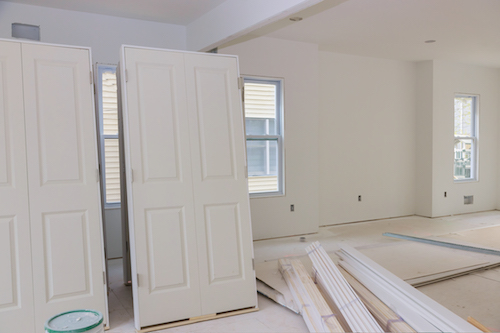
You can employ a variety of techniques to lessen sound transmission in your home’s interior spaces. But one of the most straightforward soundproofing techniques is also one that is most disregarded: selecting the proper soundproof door. For many homeowners, switching out inner passage doors with hollow cores for solid doors is the first step toward a quieter home.
Basics of Household Sound Transmission
The issue of sound in a home can be debatable and occasionally emotionally charged. You need benchmarks in order to measure the problem objectively.
A door, wall, or other domestic material’s acoustical performance is quantified by its Sound Transmission Class (STC) rating. A device’s ability to withstand the transmission of sound is indicated by higher STC values.
Common STC ratings:
- STC 25: Normal speech can be clearly understood
- STC 30: Loud speech can be understood; normal speech is heard but not understood
- STC 35: Loud speech audible but not understandable
- STC 41: Loud speech sounds like just a murmur
- STC 45: Loud speech is barely audible
- STC 50: Loud musical instruments barely heard
Wall and Door STC Ratings
Any wall penetration only serves to increase sound transmission if a home’s internal walls aren’t a strong enough soundproofing barrier. Doors are a weak point, with hollow-core interior doors being the most vulnerable.
STC Rating House Element
20 to 25 – Most interior hollow-core doors
30 – Solid doors, particleboard core
33 – Standard interior wall with 1/2-inch drywall on both sides and 3-1/2 inches of airspace
39 – Interior wall with 1/2-inch drywall on both sides and 3-1/2 inches of space filled with insulation
45 – Double layers of 1/2-inch drywall on both sides (for a total of four layers of drywall), with 3-1/2 inches of space filled with insulation
55 to 60 – Solid wood slab door
Why Doors Are a Key Soundproofing Element
The drywall on walls and ceilings is frequently overly thin, which allows sound to transmit through them. But contrary to what you might initially believe, interior doors take up a far larger portion of the wall space.
If the wall next to a noisy location is 80 square feet, then the door takes up around 20% of that space. When it comes to sound transmission, the door itself frequently serves as the weak point in the wall, especially if it is a hollow-core door, which is the norm in the majority of modern home construction.
The STC ratings demonstrate that you can significantly increase the soundproofing of any wall by simply switching out a typical hollow-core door—which is typically filled with cardboard honeycomb materials—for a solid wood slab door.
Even just changing the door will significantly lessen sound transfer from one room to another. The majority of the noise can be reduced further by doubling the amount of drywall on both sides of an insulated shared wall and adding soft furnishings like wall-to-wall carpeting, runners, or area rugs.
Soundproofing Through Door Replacement
Door replacement is usually a simple task because factory stock doors used in most home construction use standard dimensions and frequently have the same hinge and lockset positions. In many cases, removing the old door from the hinges and installing the new solid-core door onto the same hinge plate already attached to the door jamb is all that is required.
Solid doors are significantly heavier than hollow-core doors, so you may need to reinforce the hinges with longer, sturdier screws to support the weight.
If you can’t find a solid wood door with the same dimensions or lockset placements, you may have to cut new hinges and strike-plate mortises into the door jambs. To fit an odd-sized door opening, as is sometimes the case in older homes, the door will need to be trimmed. This may require some precision work and may be best left to a professional craftsman who is familiar with such tasks.
Because custom-trimming a replacement door to fit can be a time-consuming process, some homeowners prefer to remove all of the door trim, as well as the entire door and frame down to the studs, before installing a new prehung solid-core door.
Prehung doors come with hinges already installed and fitted into a frame. The door-and-frame unit is installed by sliding it into the rough opening, shimming and nailing it in place, and then replacing the door trim moldings.
Southern California Replacement Door Specialists
Choosing the right interior, entry, or patio door just got easier. We are an authorized dealer for Southern California’s top door & window manufacturers.Contact us today by calling (909) 947-3310.



